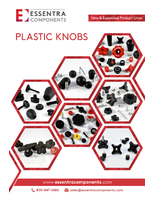Virginia Tech Engineering Students Use NI LabVIEW to Develop a Fully Autonomous Humanoid Robot
Bipedal, Soccer-Playing Robot Is the First U.S. Entry Accepted to RoboCup
NEWS RELEASE - Oct. 25, 2007 - Engineering students from the Robotics & Mechanisms Laboratory (RoMeLa) at Virginia Tech have developed a bipedal humanoid robot using the National Instruments LabVIEW graphical system design platform. The Dynamic Anthropomorphic Robot with Intelligence (DARwIn) was originally developed to study human locomotion for the research and development of prosthetic limbs. DARwIn achieves full range of motion and accurately imitates human movement so effectively that it was quickly modified to play soccer for entry into RoboCup, an international robotic soccer competition created to promote research in robotics, artificial intelligence and related fields. As a result, it has been accepted as the first-ever U.S. entry into RoboCup in the humanoid division.
"Our students used LabVIEW to design an expandable software platform as well as serve as DARwIn's brain, giving it the ability to perform high-level tasks, including playing soccer," said Dr. Dennis Hong, director of RoMeLa. "Development time was also reduced by simulating how DARwIn would behave when performing certain tasks and being able to quickly design, prototype and deploy simulated code to an embedded target."
Using LabVIEW, one graduate student with no prior image processing experience was able to use IMAQ Vision to configure two IEEE 1394 cameras and, in just two hours, write a VI that identified and physically located the relative position of a soccer ball. This ease of use made it possible to create DARwIn's soccer-playing behavior in just one week.
"National Instruments is proud to be collaborating with Dr. Hong and his talented students on such an impressive project," said Ray Almgren, National Instruments vice president of product marketing and academic relations. "We see tremendous educational benefits in using the LabVIEW graphical system design platform, and projects like DARwIn are a testament to the things students are able to accomplish with embedded design."
RoMeLa, which uses multiple robotic platforms, required a system that could be easily configured for different hardware setups. Students were able to create an expandable computer architecture using the LabVIEW Real-Time Module to accommodate a range of sensors including those incorporated in IEEE 1394 cameras, RS-485 communication devices and multiple wireless networks. LabVIEW controls DARwIn's motion over RS-485 and can read joint positions on the same serial network from the servo motors' built-in potentiometers. While the robot is walking or moving, a rate gyro with acceleration and orientation information communicates with LabVIEW over an RS-232 serial connection so that the program modifies the walking gait to effectively balance the robot in real time.
The LabVIEW graphical system design approach is popular in robotics design because it gives users the ability to design, prototype and deploy embedded systems using graphical programming with programmable hardware.
For more information on this application, readers can view Virginia Tech's winning entry for the NIWeek 2007 Virtual Instrumentation Applications Paper Contest by visiting www.ni.com/niweek/best.htm. For more information about RoMeLa, readers can visit http://www.me.vt.edu/romela.
National Instruments in Academia
National Instruments is committed to enhancing engineering and science education worldwide by providing educators and students with powerful graphical system design software and modular hardware to connect the curriculum with the real world. Professors and students benefit from powerful, professional tools such as NI LabVIEW graphical development software, which helps students visualize and implement engineering concepts. The integration of LabVIEW in the classroom creates an effective, dynamic learning environment - from LEGO® MINDSTORMS® NXT in primary schools to research laboratories in universities. For more information about NI academic products, curriculum resources and discounts, visit http://www.ni.com/academic.



